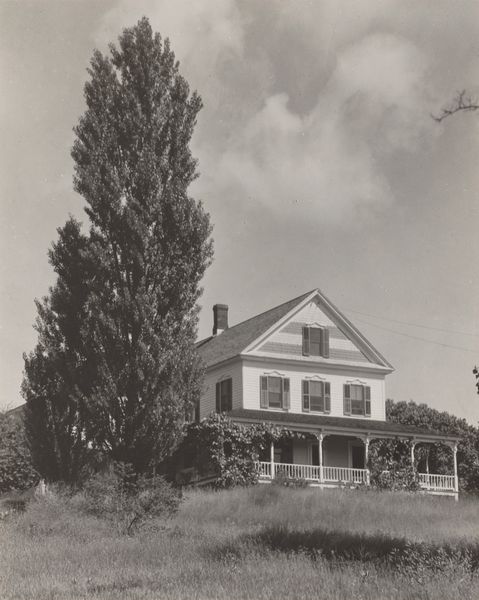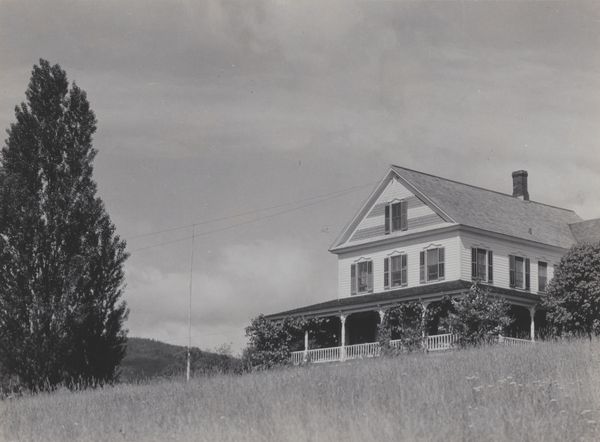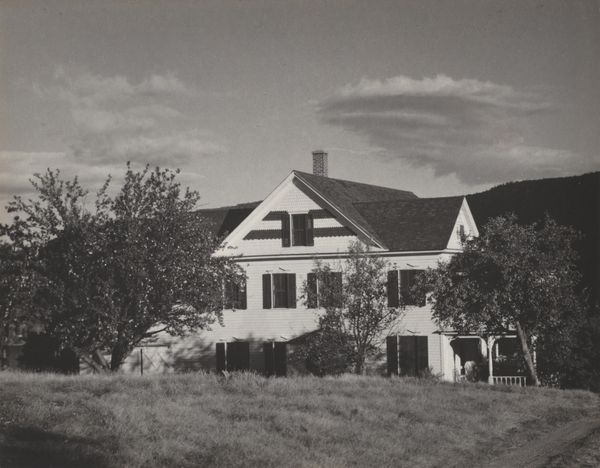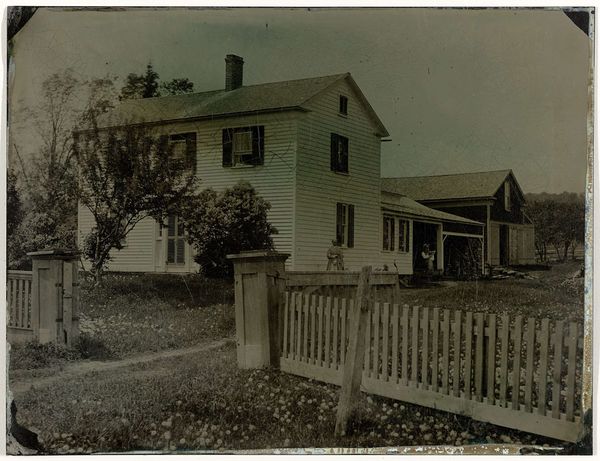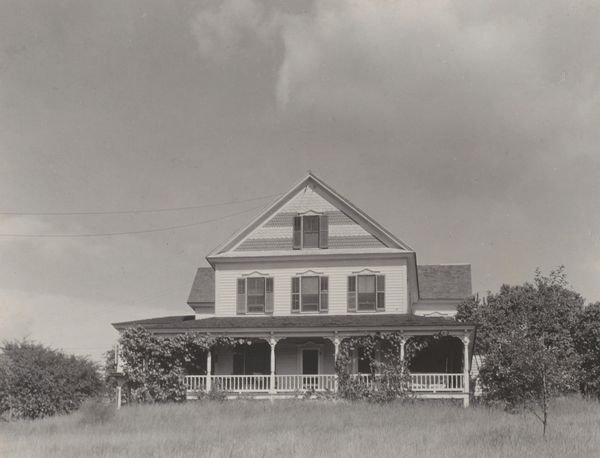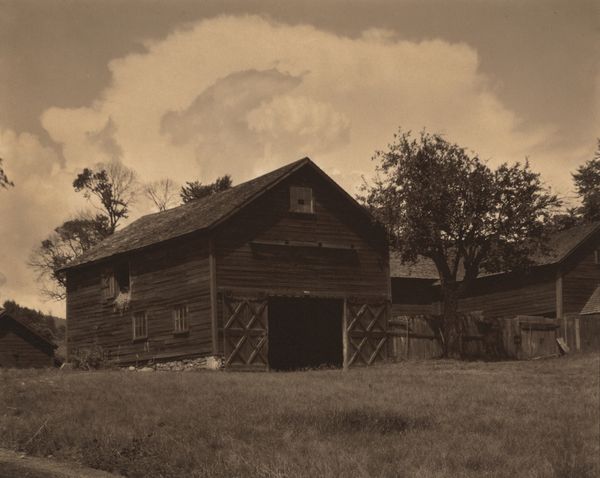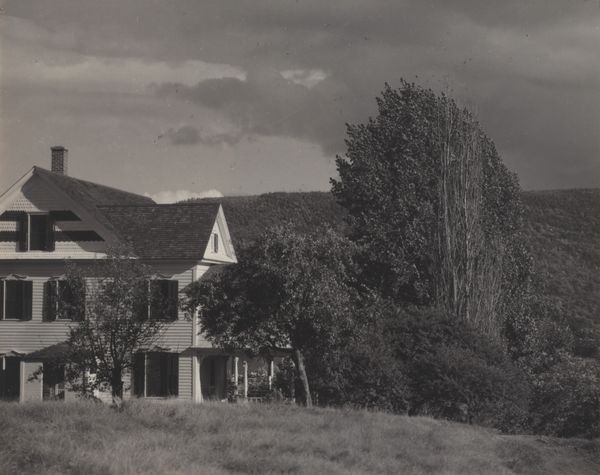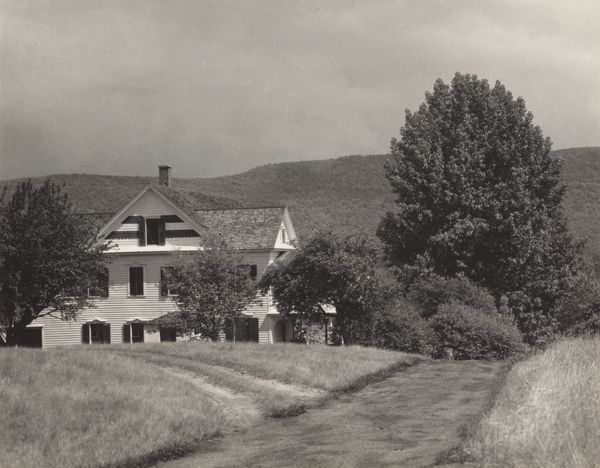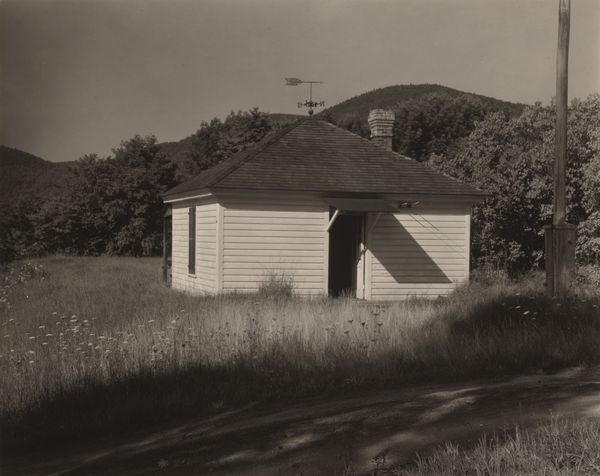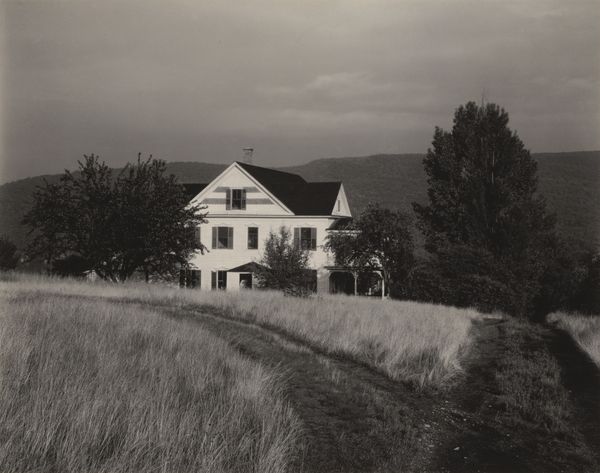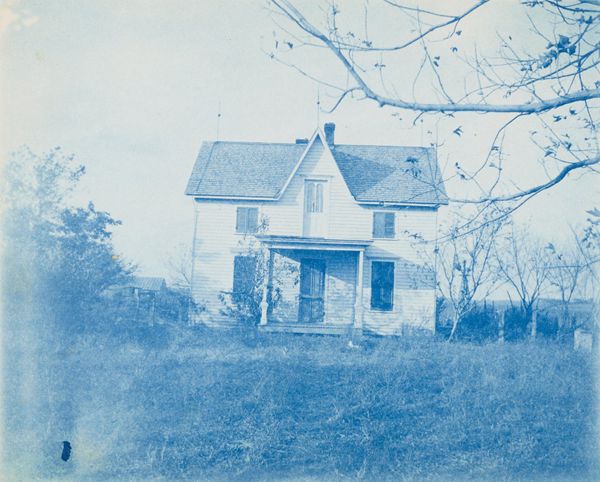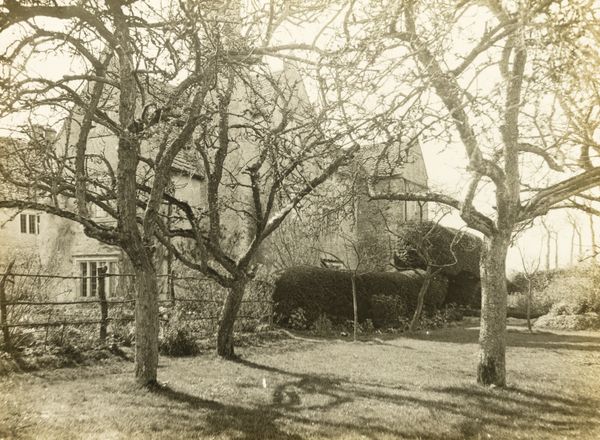
photography
#
landscape
#
photography
#
modernism
#
realism
Dimensions: sheet (trimmed to image): 18.5 × 23.6 cm (7 5/16 × 9 5/16 in.) mount: 51.7 × 41.5 cm (20 3/8 × 16 5/16 in.)
Copyright: National Gallery of Art: CC0 1.0
Editor: So here we have Alfred Stieglitz's 1932 photograph, "House and Poplars, Lake George". It's quite striking – almost serene in its composition, yet with a strange underlying tension between the natural and built environments. What do you see in this piece, particularly in terms of its formal qualities? Curator: I'm drawn to the interplay of light and shadow. Note how the strong verticals of the poplar trees are echoed in the architecture of the house, creating a dialogue between the organic and the geometric. The composition itself presents a study in contrasts; the soft, muted tones of the grass in the foreground lead our eye to the sharper, defined lines of the building. Editor: That's interesting. I hadn't considered the dialogue between the vertical lines of the trees and the house. But, the house still dominates the picture in a strange way... Curator: Precisely. Consider how Stieglitz frames the house, almost as a found object. Its presence disrupts the pastoral setting. Look closely at the textures too. The rough, unrefined surface of the road contrasts with the smooth, even cladding of the house's facade. What does that juxtaposition suggest to you? Editor: Perhaps the photograph explores how the concept of "home" sits within the broader natural landscape. Also, maybe, Stieglitz challenges our perceptions through texture? Curator: Good observation! The varying textures in photography manipulate depth of field and create areas of interest. Consider also that it may present us with the paradox of nature as texture and culture as structure. It also challenges what we may immediately assume from photographic "realism," questioning our very presumptions and our act of looking at images themselves. Editor: This formal analysis opens up new doors in understanding Stieglitz's photography, so thank you! Curator: The pleasure was all mine. Paying close attention to form, the artwork then has many more things to communicate, on multiple levels.
Comments
No comments
Be the first to comment and join the conversation on the ultimate creative platform.
